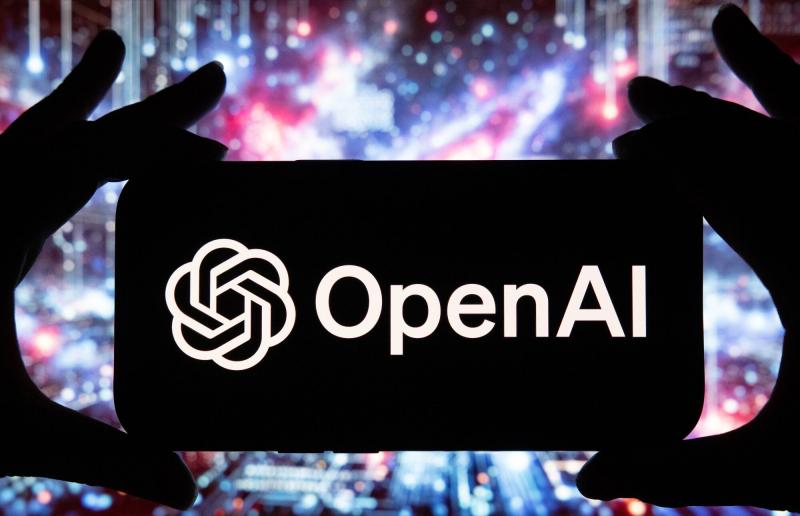Conde Nast has penned a multiyear agreement with OpenAI to license the magazine company’s content, the latest high-profile media deal for the artificial intelligence (AI) start-up.
OpenAI, which makes ChatGPT and other AI tools, will display content from brands like Vogue, the New Yorker and Wired within its products, the company said yesterday. The deal also allows OpenAI to use Conde Nast’s content to help train its AI models, which require vast amounts of data to learn.
The announcement marks an expansion of OpenAI’s efforts to cut deals with media companies, rather than battle them over how the company uses news articles and other content in its AI tools. Financial terms were not disclosed.

Photo: Bloomberg
“It's crucial that we meet audiences where they are and embrace new technologies while also ensuring proper attribution and compensation for use of our intellectual property,” Conde Nast chief executive officer Roger Lynch wrote in a memo to employees. “This is exactly what we have found with OpenAI.”
OpenAI has been “transparent and willing to productively work with publishers,” Lynch said, adding that the deal is “just the beginning” of the “fight for fair deals and partnerships across the industry.”
Last year, OpenAI made similar deals with Axel Springer, the Atlantic and Vox Media, among others. Not every outlet, however, is working with the company. In December, the New York Times sued the start-up for allegedly using its copyrighted articles without permission to build its technology. OpenAI has disputed the claims, saying that the New York Times is not “telling the full story.”
As part of the deal with Conde Nast, OpenAI will also use the content in its upcoming SearchGPT product, a search-oriented version of its popular chatbot, which has yet to be widely released.
OpenAI chief operating officer Brad Lightcap said in a statement that the company is “committed to working with Conde Nast and other news publishers to ensure that as AI plays a larger role in news discovery and delivery” and that “it maintains accuracy, integrity, and respect for quality reporting.”
Meanwhile, OpenAI is releasing a new feature that will let corporate customers use their own company data to customize the artificial intelligence startup’s most powerful model, GPT-4o.
The start-up was to roll out the customization capability, known generally in the AI industry as fine-tuning, yesterday.
Fine-tuning allows existing AI models to be trained on additional information about a particular sort of task or subject area. For example, a company that makes skateboards might fine-tune an AI model so that it could be used as a customer-service chatbot able to address questions about wheels and the specifics of caring for a board.
To fine-tune a model, customers must upload their data to OpenAI’s servers. The training takes, on average, an hour or two, said John Allard, an OpenAI software engineer who works on customization. Initially, users will only be able to fine-tune the model with text-based data, Allard said, not images or other content.

Zhang Yazhou was sitting in the passenger seat of her Tesla Model 3 when she said she heard her father’s panicked voice: The brakes do not work. Approaching a red light, her father swerved around two cars before plowing into a sport utility vehicle and a sedan, and crashing into a large concrete barrier. Stunned, Zhang gazed at the deflating airbag in front of her. She could never have imagined what was to come: Tesla Inc sued her for defamation for complaining publicly about the vehicles brakes — and won. A Chinese court ordered Zhang to pay more than US$23,000 in

Taiwan Semiconductor Manufacturing Co (TSMC, 台積電) yesterday said that its investment plan in Arizona is going according to schedule, following a local media report claiming that the company is planning to break ground on its third wafer fab in the US in June. In a statement, TSMC said it does not comment on market speculation, but that its investments in Arizona are proceeding well. TSMC is investing more than US$65 billion in Arizona to build three advanced wafer fabs. The first one has started production using the 4-nanometer (nm) process, while the second one would start mass production using the

US President Donald Trump has threatened to impose up to 100 percent tariffs on Taiwan’s semiconductor exports to the US to encourage chip manufacturers to move their production facilities to the US, but experts are questioning his strategy, warning it could harm industries on both sides. “I’m very confused and surprised that the Trump administration would try and do this,” Bob O’Donnell, chief analyst and founder of TECHnalysis Research in California, said in an interview with the Central News Agency on Wednesday. “It seems to reflect the fact that they don’t understand how the semiconductor industry really works,” O’Donnell said. Economic sanctions would

‘NO DISRUPTION’: A US trade association said that it was ready to work with the US administration to streamline the program’s requirements and achieve shared goals The White House is seeking to renegotiate US CHIPS and Science Act awards and has signaled delays to some upcoming semiconductor disbursements, two sources familiar with the matter told reporters. The people, along with a third source, said that the new US administration is reviewing the projects awarded under the 2022 law, meant to boost US domestic semiconductor output with US$39 billion in subsidies. Washington plans to renegotiate some of the deals after assessing and changing current requirements, the sources said. The extent of the possible changes and how they would affect agreements already finalized was not immediately clear. It was not known